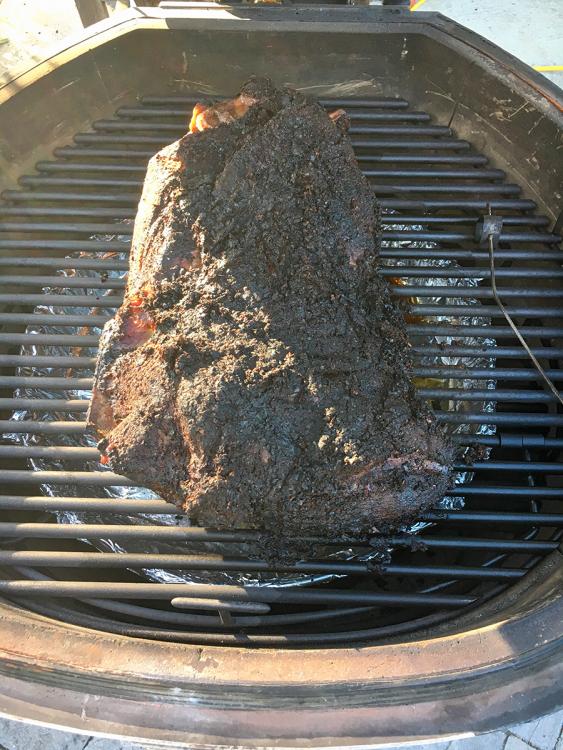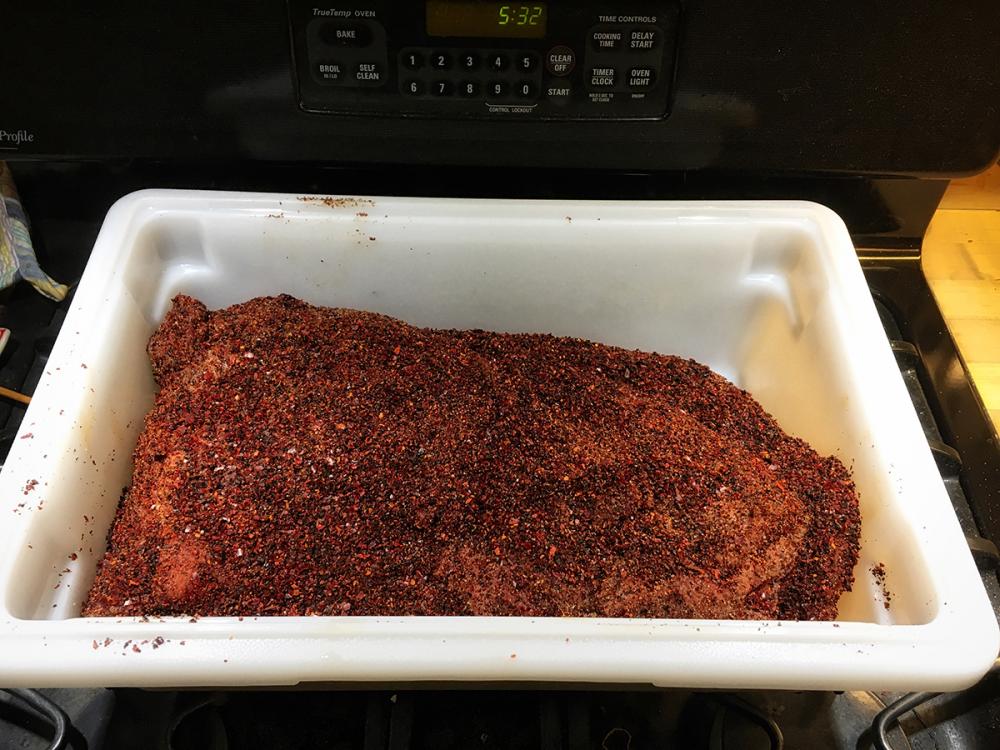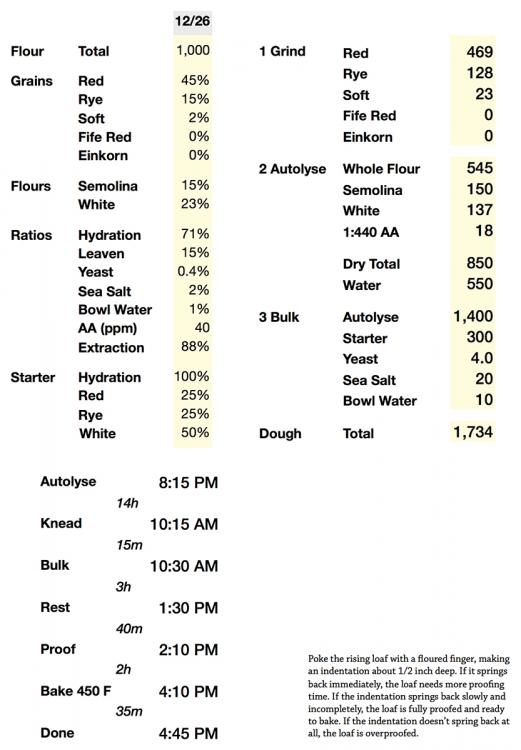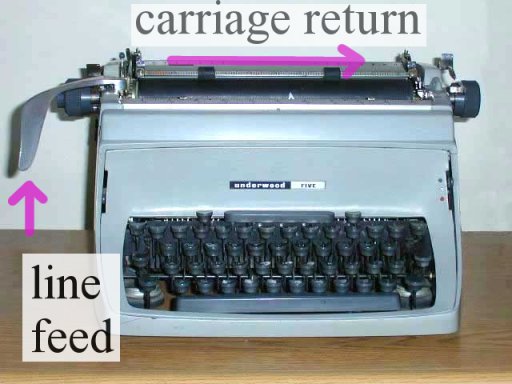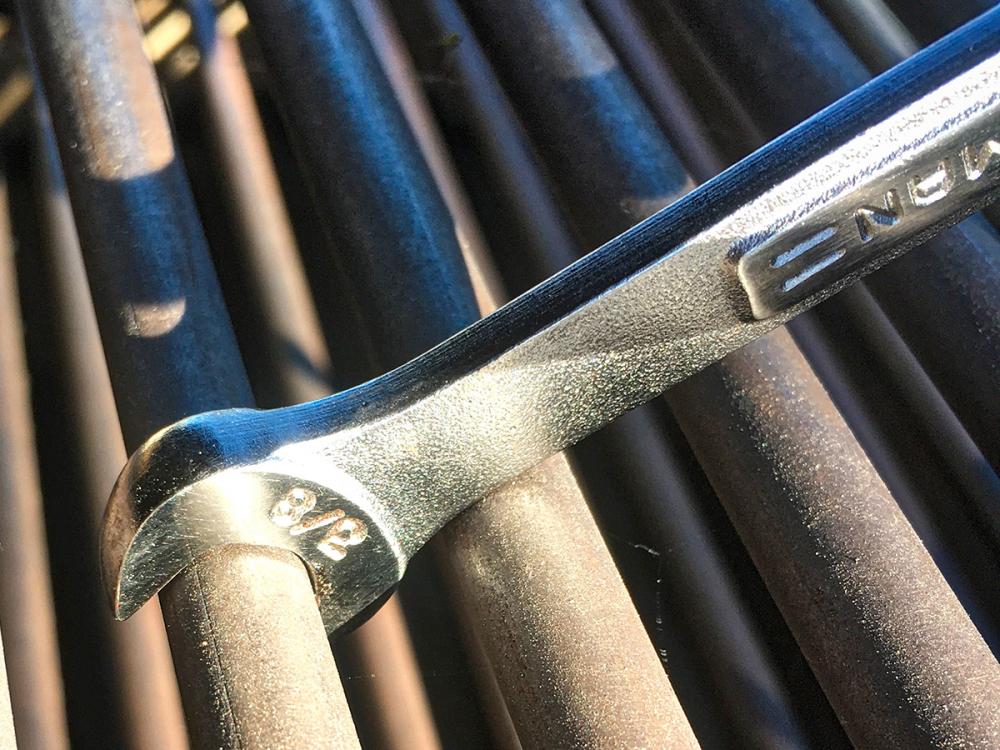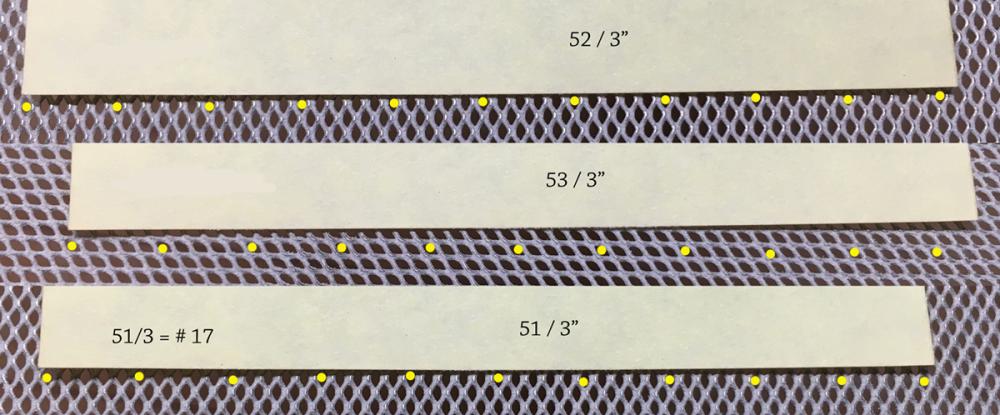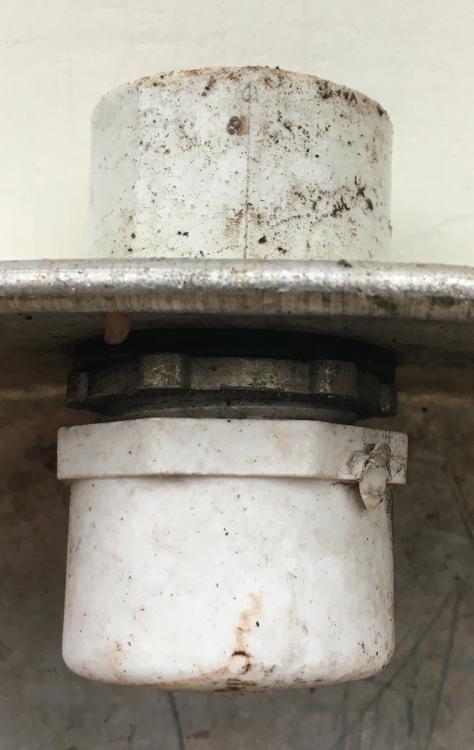-
Posts
1,741 -
Joined
-
Last visited
-
Days Won
53
Content Type
Profiles
Forums
Events
Everything posted by Syzygies
-
This is about $550 per kitchen, and I did it twice. I'm easily amused, but my knives are about twice as sharp as I thought humanly possible. This thrills me every single night, worth the price of admission. (One needs some holder, there are inexpensive alternatives. One needs some flattener, I don't trust other choices with the finer grade stones. If one skimps, the starter set is $264 + some way to hold stones + some way to flatten stones.) Shapton Glass 4pc Set 500x, 1k, 4k, 8k Shapton GlassStone 2000 Grit Shapton Sharpening Stone Holder Atoma 1200x
-

Stone vs Baking Steel vs Cast Iron
Syzygies replied to Garvinque's topic in Bread, Pizza, Pastries or Desserts
I have multiple Baking Steels, and multiple Fibrament-D baking stones. I take at face value any claims that a given solution works, but one can only make comparisons by trying both. People who make baking stones understand all sorts of heat transfer coefficients not generally revealed to the public. Dennis in particular understands this for his stones, which I have no doubt are as good as Fibrament-D. The rough idea is how quickly the stone returns heat energy to the baked good. One has seen something similar with bouncing rubber balls of different materials. Some balls bounce high, some are nearly dead, on purpose. To hit a given target, one compensates with different balls by how hard you bounce them. Here, good cooks can adapt and get great results from either Baking Steels or stones. Yet we're fighting a strong current here; to adapt, it helps to know which way it is flowing. A Baking Steel is optimized for returning a lot of heat in a hurry. A stone is tuned to return heat at a measured pace. Thus, I prefer a Baking Steel for thin crust pizzas, e.g Neapolitan style cooked very quickly. It also makes a great burger griddle, working on the KK. I prefer stones for baking bread; I don't like my bread to burn. A special problem, baking in the KK, is that heat comes from below. An unprotected steel or stone, left too long, gets too hot. One ends up cooking entirely from below, when ideal (think how a classic wood-fired pizza oven works) is mostly radiant heat from above. I work around this by stacking everything I've got, as a heat shield. For example, I had bought a thick rectangular kiln stone for baking bread. It didn't quite work, again the wrong thermal characteristics. (I'm of a certain age, and hippies loved appropriating objects that "the man" intended for other purposes, even if the redirection doesn't quite work. The old literature is filled with references to lining one's oven with kiln stones.) So I ordered a matching, also thick, Fibrament-D stone to set on top. It nicely fits two loaves of bread side-by-side, and the stack is thick enough to not overheat in my time frame. My giant cast iron skillet, filled with chain (meant for producing steam) also helps to turn the KK into an indirect oven. -

Best vacuum packer? (FoodSaver alternatives?)
Syzygies replied to Syzygies's topic in Relevant Product Reviews
I believe that creating an account will do the trick. It's no more that choosing a name and password, that you'll want in any case for order tracking. -
I have written Dennis privately for advice on the best gasket retrofit for my 2009 23" KK Ultimate. For indoor ovens, a common warning that comes with using ample steam is possible damage to the oven. Electronics? Glass door? Hasn't been my problem. For a KK, the gaskets are perhaps the most vulnerable component. When steam condenses back to water, it transfers a massive wallop of energy; that's why steam burns are so dangerous. Perhaps the KK gaskets are glued on fine for normal use, but can't withstand constant bombardment by steam. I'm too hooked on bread to give up this practice, I'll figure this out, but in the interest of full disclosure I wanted to raise this possible issue.
-
Whole shoulder (15 lbs butt + picnic) for a party tonight. A friend from South Carolina will be making the sauce. I forgot to replace my 16" terra cotta plant saucer after the last one cracked, so I improvised with a foil-lined 42cm paella pan.
-
Back to regular Red winter wheat berries (Giusto). The Fife red just wasn't behaving. Or was it the einkorn?
-

Paragraph After Carriage Return
Syzygies replied to ckreef's topic in Forum Suggestions, Issues and Enhancements
Hijacking this thread to register my frustration that an edit for spelin or gramer moments after we "Submit Reply" gets tramp stamped with "Edited..." Even if no one has responded. Even if no one has viewed the post yet. This seemed the ideal thread, as [1] it's the most current discussion of forum ease of use, and [2] it has a glaring spelling error in it's title. It must be ridiculously painful for even a moderator to correct title spelling, or else someone would have helpfully fixed this. On facebook I'll routinely delete a post and start over, to avoid the "edited..." stamp. Here, one can't delete posts silently. So one chooses which defaces one's post more, leaving in poor spelling and grammar, or replacing it with an "Edited..." stamp. There are activities like mudding a wall where one learns to leave well enough alone, any attempt to fix an imperfection leaves a more glaring imperfection. The forum software turns posting into mudding a wall, leave in spelling errors if the software is going to be that sensitive about all that. But then, visitors who don't post have no idea about the effect of forum software on our ecosystem. They just think we're hicks who can't spell, which has to work against selling $4K cookers? There is one appropriate time to leave minor spelling errors in one's writing: If one composes and types much faster that a correspondent, who might lay awake nights concerned that they have taken up way too much of your time, the "dashed off" look achieves a social nicety with a purpose. Carefully placed errors achieve this goal. Sort of like if you're a sleeper agent taking a special services exam, concerned that your perfect score will attract the wrong kind of attention. Carefully back off on an answer, without getting this back-peddling caught on video. -
Yes, we've tried Red Fife wheat berries for a range of applications. Pie crust: Not as flaky. Pasta: Clear winner. Bread? In multiple tries with free form "artisan" loaves (no bread pan) I get the spread out sploosh I used to get with any "green" flour (not aged) until I learned about ascorbic acid as a dough conditioner. It is as if Red Fife wheat is unresponsive to this conditioner.
-
http://www.chefknivestogo.com/shgl4pcset50.html I've also long believed in freehand. The sound and feel tells you you're doing it right, like so many other rewarding activities. These stones are incredible. My Japanese knives are as sharp as I've ever experienced, and even western knives easily come out sharp. The feedback tells you when to advance to the next stone, and these are twice as fast as natural or cheap synthetic stones. One needs a holder of some description, and ideally a diamond stone for cleaning and flattening these (who cuts the barber?).
-
I do own the major alternatives. I haven't used my grill floss since someone on these forums proposed using a 3/8th wrench. Note this is a Craftsman, and is nicely rounded to match the grate. Other wrenches vary, and owner satisfaction varies accordingly, for this application. In my opinion this is a much better option than grill floss. The only advantage of grill floss is length, if the fire is raging. That's not when I clean.
-
Perhaps. He claimed that they said to say something if the reading went over a certain number. What he saw was a reading that got stuck at that number.
-

Well, this was certainly strange(but a nice surprise)
Syzygies replied to billg71's topic in Jokes, Ribbin' & Misc Banter!
Another point along this design spectrum: SpringUSA Blackline SwissSteel Cookware I have all but the largest of these pans; the 12 5/8" has an enormous handle. These have less design attitude than Finex; they're simply a perfected successor to either French carbon steel pans or American cast iron pans. They season like either. Smooth like French pans, heavy like American pans. I've tried a variety of the best regarded French pans, and Lodge and other traditional American pans, and I prefer these. The design doesn't have attitude at all, really. Rather, simple perfection, how could its ancestors not achieve this design? The Finex pans have attitude, but I like their attitude. I'd have to try one to be sure, but my impression for now is that I still prefer SpringUSA. -
Stainless Steel Flour Sieve, 12 in. (roughly #17) Gilson 12in Round Test Sieve, All Stainless Steel - #35/500um Komo Classic Grain Mill So I measured Laurie's smaller sieve, to put together some extraction percentages using the Komo grain mill. These numbers may vary by grain and by grinding stone wear, but they give a rough idea: With my #35 test sieve, I easily get 80% extraction in one kitchen, and struggle to get 80% extraction in the other (80% flour, 20% discarded bran). With Laurie's smaller #30 sieve, she gets 90% extraction. Using the coarse #17 "mixing" sieve, if I sieve three times I can remove 8% bran leaving 92% extraction. And sieving three times with the #17 coarse sieve is less frustrating for large quantities than sieving once with the #35 fine sieve. My take away? The marked jump between #30 and #35 tells us something about the finest grind that the Komo is capable of doing. If one were flush, and owned an entire range of test sieves and a shaking table, one could describe exactly how many mills on the market (mixer attachments, etc.) performed. I continue to love my #35 sieve for pasta, full of whole wheat flavor but smooth as semolina pasta. I can imagine ordering a #25 test sieve for bread, but I'm going to instead experiment with getting by using the coarse sieve. Ballpark 90% extraction either way, not clearly worth the money or storage to get a third sieve.
-
So we're just now discovering the wonders and perils of Red Fife Winter Wheat. Read up by Googling, it doesn't behave like the wheat you know. I'm on try four, and not yet back to where I was before on technical issues. But the flavor! Others agree it hands down wins against any other wheat flour for bread. Organic Red Fife Wheat Berries
-
That's a routine I can follow.
-

Best vacuum packer? (FoodSaver alternatives?)
Syzygies replied to Syzygies's topic in Relevant Product Reviews
Today (December 11) VacMaster is offering $150 off the VP120, the successor to the machine I have. Normally $780 on Amazon, $799 at VacMaster, this brings the price down to $649. Coupon: DAY11 VacMaster VP120 Home Chamber Vacuum Sealer I'd get the VP215 instead, but one needs more space, a friend to help lift it in place, and the advantages of the oil pump come with having to think about the pump. I'm happy with my VP115 and very happy with their customer support. They resolved my falling seal pad to my satisfaction. I quoted my earlier post in its entirely as otherwise I'd want to say it again. (I just bought one for California. Our location is cold, so an oil pump might not be a good idea.) -
TelTru FAQ TelTru is a premier manufacturer of replacement thermometers; various of us have several (trading sensitivity for range). They state a low temperature operating limit of -50F for bimetal thermometers with silicone fill. My speculation is that their other bimetal thermometers have no such lower limit. The display quite naturally goes off scale low well before this point. Whether this causes loss of calibration is both an empirical question and a question for each manufacturer. My thermometers often see 25 F over winter nights, and on low & slow cooks the comparison with my BBQGuru is at least a sanity check (the different locations take a very long time to converge to the same temperature, even if all instrumentation has perfect accuracy). So, dunno. I've been able to ignore this issue and my food tastes good. As I said, ultimately an empirical question. Who has witnessed loss of calibration after freezing nights? For the regulation issue, the operating temperature range would be a good question for Dennis to take up with his supplier. Don't get me wrong; I deeply respect asking this question. What's the poster child for asking this question? Apollo 13 returning home alive after a severe explosion in space. The ultimate cause of the explosion was bare wire inside an oxygen tank, which sparked the contents during a routine in-flight stir. Earlier on the ground, NASA needed to boil off the contents of that tank, missing a voltage design change that accidentally fused a heating element always-on. They asked some guy to sit on a folding chair and say something if a thermometer read over a certain limit. The thermometer quickly reached and got stuck at this limit; it wasn't designed to read off scale high. The guy didn't say anything, and the tank problems went unnoticed.
-
Here's my improvised hole plug. It looks to me like threaded PVC plumbing parts, and perhaps the gasket that came with the pan.
-
My original post just said to figure it out. Perhaps not so helpful, but you are standing in a box store (Lowes, Home Depot) with the hole you're trying to plug right in your hand. When Apollo 13 had to patch the command module air scrubbers to work in the LEM, they had to make do without a box store at their disposal. I wasn't more specific because the kinds of parts one might consider don't come branded, and different water heater pans have different sized holes? I found some plastic parts that screwed together like a bolt and nut, nearly filling the hole, and added some gaskets to make the plug watertight. I thought about simply filling the hole (solder? glue? weld?) but my first draft plug worked, I stopping thinking about this. I'm actually on my second pan. The plastic one didn't last; get metal. The other shoe needs to drop, here. Oil change pans are nice idea; can one find one that is round, or large enough? I've seen cake pans this big; a cooking supply store? Though jury-rigging a water heater pan is likely to be the economy choice.
-
I used the little wishbone to find the URL of a post, which can be used anywhere on the web including this site. One can use a link to anywhere, on this site, using the little chain link (Link? Link? it's a pun) on the edit bar (fourth from left, after B I U ). For example, here's a link to your post: Your post I did that exactly as I explained. So one can share posts within this site.
-
See posts 49 and 52 in Grill Cleaning That's what I do between two low & slows, to get the rancid grease off. The most impressive technique I've tried is closing the grate in a contractor bag with a bowl of ammonia, and leaving the bag out in the sun for a day. I'm amazed I don't end up with a sink hole in my back yard.
-
http://komodokamadoforum.com/topic/7396-numbering-posts/ http://komodokamadoforum.com/topic/7396-numbering-posts/?do=findComment&comment=83716 This is thread 7396. One doesn't need a number for the original post; ckreef's reply is comment number 83716. Why would one want to use a natural language sentence to refer to a post, when one could use a direct link? The icon to the very far right on the gray bar above each post, that looks like a sideways wishbone, expands to give a link one can copy. The chain icon on the edit bar (fourth from left, after B I U ) lets one enter this URL into a new post. At my college we distribute internal links using natural language, because the IT folks are terrified that we're too naive to spot a phishing email. They may be right. How can Antartica be so dry, with all that water? Because it's all frozen onto the ground. Academic intelligence is all frozen onto obscure subjects of little real world interest. Yet banks manage, and they deal with everybody. One of my banks shows me an image I chose when I log in, for reassurance. This issue drives me crazy. So, yes, the spirit of this thread is that we should all be better spiders, weaving hypertext in the modern way, referring to other posts using the contemporary idiom supported by this forum software.
-
Not mashed potatoes, but my sous vide potato fries impressed a very critical friend. He was dumbfounded that the texture I produced was even possible. Yet to a less critical eye they didn't tip their hand "sous vide". Rather, modern technique applied to plain traditional food. Peel, portion, and vacuum pack potatoes. Sous vide starting in cold water, 86C for 60 to 90 minutes. Unpackage, set pieces on a drying rack, and train a fan on the rack for several hours. Now, pan fry with prejudice in ghee. Salt, Pepper, perhaps a bit of Maras or other chile pepper. Serve.
-
Maybe ten years ago one could call it a recipe. It's gotten simpler with time. Grind 120g to 150g of red winter wheat, sieve through #35 screen, and top up with semolina flour to 180g. Add and mix well 1/2 tsp salt. Add and mix well 1 TB (or less) olive oil. Now, crack 2 to 6 eggs (to taste) into a cereal bowl. Use a tablespoon measure to lift out the yolks and transfer to the flour mixture. Mix well. Now add water as necessary till the dough is not too dry, mix well and rest twenty minutes. (Fresh flour hydrates like crazy.) One can hand knead first, or not. Cut into two pieces (180g flour is the limit for this). Knead each piece well by a dozen passes, folding in half and passing through the widest setting of a crank pasta machine. Here, one sees what is impossible to explain, what is the right moisture content? I never measure, I sense and adjust, and sometimes miss. Too dry dough will create a rough, ragged edge on both sides as it passes through the pasta machine rollers. One wants the dough just moist enough to handle well, with clean abstract edges as one rolls, but no wetter. Adjustments are possible both ways: Keep dredging in white flour as one folds and rolls, if the dough is too wet. Wrap flat pieces of dough in damp paper towel as one works on the other piece, if the dough is too dry. Rolling out the dough, roll fairly thin and tender (the dough is sturdy otherwise). We go to 5 for thick, or 6 for thin, on an Atlas. Let the sheets dry somewhat before cutting. One wants the dough to handle beautifully, and not clump when you cook it. All's fair, other than that. This dough is robust and unlikely to clump while cooking, no matter what. Stuck pasta? One is thinking of dried pasta, and bad restaurants, or that twenty-something group house where everyone went into the other room to smoke a joint, and forgot about the pasta. If one stirs immediately after adding the pasta to boiling water, it always separates. One hears that fresh pasta cooks at the mere sight of boiling water, but this pasta needs a minute or two, even if it will cook further in the sauce as Mario Batali preaches. Taste it, learn what you like. Undercooked is no fun, and this pasta doesn't overcook as easily as pasta made from white flour. In Giuliano Bugialli's classes, I always went first making pasta, as others feared the inevitable critique. He would have a heart attack watching me work whole grain pasta, even though that is closer to Italy's ancient spirit. It's sturdy, and one works it like it is sturdy. We skin, partially dry, and freeze a year's worth of tomatoes each summer. A sauce with a tomato packet, always olive oil, garlic and black pepper, perhaps capers or olives, perhaps pancetta, sometimes garden herbs or our parsley, with grated pecorino cheese, is our signature dish on this pasta. We make it if we have no other ideas, and it's the single best thing we make.
-
Exactly. I have one of these on each coast. My wife Laurie uses the western one nearly daily, for any flour-based dessert, pasta, bread. I use the eastern one for pasta and bread. I'm sure this is most of the reason my bread tastes so good. As always, sourcing makes the cook. The poster child for the issue here is headphones. One spends $25 then $50 then $100 then $200 only to realize one has already spent nearly the $400 for the headphones one wants. All less expensive grain mills are loud, prone to static, messy, ugly, and don't grind fine enough. One can do better, but this mill is good enough. The burrs are replaceable, once a decade depending on usage. For efficiency I prefer to sieve using a 12" diameter sieve. The two essential sieves are a coarse sieve for mixing, and a fine sieve for partial extraction. Inexpensive fine sieves are too fine; I went with a lab grade test sieve to choose the exact fineness, going with #35 which gives me 75% or more extraction (yield by weight). Great for whole grain pasta with the technical properties of white flour. I'd be curious to go coarser for bread, though I am happy now. Vollrath makes a 12" bowl that fits beautifully under these sieves. I have sets of 3, 4, 5, 8 quarts in this heavy duty 690xx series on each coast, and they get used for everything. (3,4,4,8,8 west; 3,4,5,8,8 east; the west bowls store nestled in wooden drawer pull knobs screwed into the front of pantry shelves, for easy access.) A friend admired these but cheaped out buying for his house (to save money for wine I can't afford), and his wife is continually aware of the quality differences. We are pleased every time we touch ours. VOLLRATH MIXING BOWL, STAINLESS STEEL 8QT - 69080 Stainless Steel Flour Sieve, 12 in. (roughly #17) Gilson 12in Round Test Sieve, All Stainless Steel - #35/500um Laurie prefers a 10" sieve. These fit nicely into a five quart Vollrath bowl. One can find these hit-or-miss everywhere with unspecified screens, for example in Chinatown kitchen supply stores, or online cookware sites. I noticed one source that specifies #40 or #50 fine sieves; the #40 would yield very refined whole grain products. Vollrath (69050) Heavy Duty Mixing Bowl (5-Quart, Stainless Steel) Flour sifters Finally, Chad Robertson inexplicably makes no mention of the perils of "green" flour, in his books. (Flour needs to be aged to behave as we expect, and one doesn't want to age freshly ground flour, because the germ will go rancid.) He may be opposed to any additives, or he simply might not know. This is not widely understood, and it took me forever (dozens of loaves flattened like flying saucers) to learn what to do. Michel Suas, in a bread book meant strictly for professionals, discusses the use of 20 to 40 parts per million of ascorbic acid, to compensate for this and other issues. (For comparison, in The Banh Mi Handbook, Andrea Nguyen calls for roughly 1000 parts per million; she has no idea. After feeling what 30 ppm ascorbic acid does to bread dough, there's no way I'm taking a gram of Vitamin C for my health, ever again.) How does one measure such small quantities of ascorbic acid, commercially or at home? Thoroughly mix ascorbic acid 1:20 with white flour, and save in a labeled jar. Thoroughly mix some of that 1:20 with white flour, for a 1:440 mixture one can actually measure with a gram scale. I'm trying to figure out how to ask Chad Robertson about this. Cookbooks are often an unlabeled mix of what the author knows and what the author surmises. For example, Paul Bertolli's Cooking by Hand got us started grinding our own flour for pasta (thank you!) but we quickly concluded that he had restaurant experience with very fresh flour from local mills, but no actual experience with home-ground flour. Here, Chad Robertson has tight relationships with artisanal suppliers, is that the same as grinding at home? Are his suppliers sneaking in flour conditioners, knowing what he'd say if they asked, but not wanting to lose his business? Or has he, and he alone, mastered the delicate puzzle of working with green flour without experiencing the usual perils. Dunno. As usual, beware any comment that translates to "I don't do that, but the best I do is the best I know!" Adding 30 ppm ascorbic acid to green flour makes a difference.



